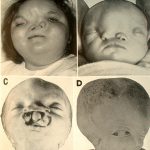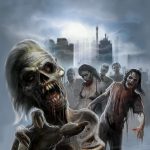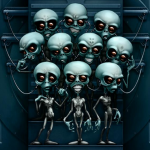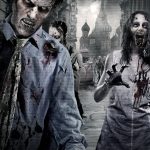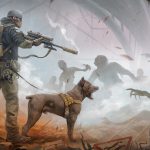Broadly say, zombies have the appearance of the living but their lack of free will and souls give them the appearance of mechanical robots.
Some display visible signs of desiccation, decay and emaciation on their face and body. They have blank, expressionless faces that become more animated when they get hungry and engage in a feeding frenzy.
They seem to display an increased strength relative to normal humans; some sources attribute this to removal of normal neurological limits to muscle strength (e.g., Golgi tendon reflex).
They are normally encountered wearing whatever clothing they wore in their human life, prior to reanimation.
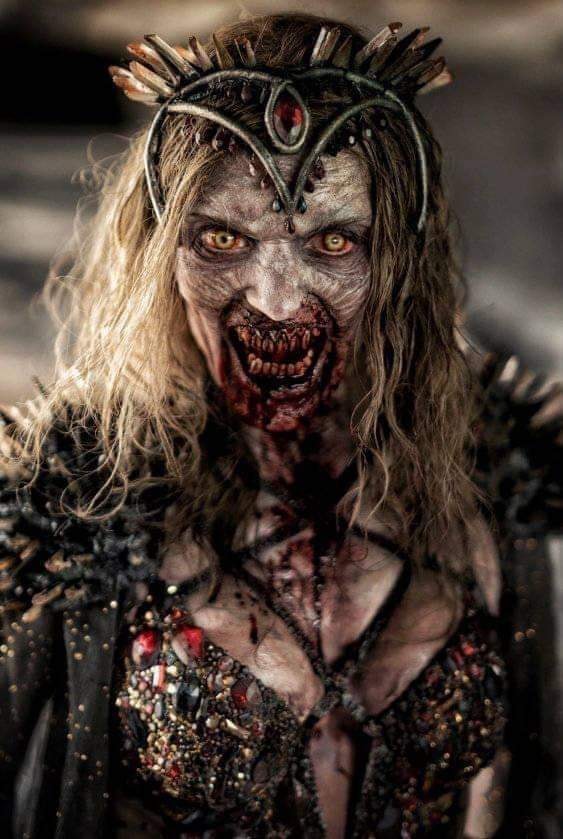
The body
Zombie bodies are human bodies, but with changed properties due to the decay occurring after biological death. Normal nervous system activity seems lacking, and only motor control exists. Zombies do not feel pain, or at least, do not react to it. They do not seem to suffer much from blood loss and do not need to eat or drink.
The brain
The most complex behaviours in highly developed animals such as mankind are associated with the cortex. If you remove the cortex in animals, their behaviour becomes purely instinctive and ‘stereotyped’. They can repeat over-learned behaviours and have instinctive gestures. In other words, they behave a bit like zombies.
The cortex, the outermost layer of the two hemispheres of the brain, is commonly described as comprising three parts: sensory, motor, and association areas. The sensory areas are the areas that receive and process information from the senses. Parts of the cortex that receive sensory inputs from the thalamus are called primary sensory areas. The senses of vision, audition, and touch are served by the primary visual cortex, primary auditory cortex and primary somatosensory cortex.
The motor areas are located in both hemispheres of the cortex. They are shaped like a pair of headphones stretching from ear to ear. The motor areas are very closely related to the control of voluntary movements, especially fine fragmented movements performed by the hand. The right half of the motor area controls the left side of the body, and vice versa. Association areas function to produce a meaningful perceptual experience of the world, enable us to interact effectively, and support abstract thinking and language.
The parietal, temporal, and occipital lobes – all located in the posterior part of the cortex – organize sensory information into a coherent perceptual model of our environment centered on our body image.
The frontal lobe or prefrontal association complex is involved in planning actions and movement, as well as abstract thought. Our language abilities are localized to the association areas of the parietal-temporal-occipital complex, typically in the left hemisphere. Wernicke’s area relates to understanding language while Broca’s area relates to its use.
“The cerebral hemispheres are the two largest structures at the top of the brain which enfold (and, therefore, conceal from view) most other brain structures. […] The top layer of the cerebrum (about 1cm at its deepest) is the cerebral cortex (usually just called ‘cortex’ which means ‘bark’). […] About three-quarters of the cortex does not have an obvious sensory or motor function and is known as the association cortex; this is where the ‘higher mental functions’ (cognition) – thinking, reasoning, learning, etc. – probably ‘occur’. […] There is no doubt that the cortex is not necessary for biological survival […] as some species do not have one to begin with (e.g. birds) and in those that do, surgical removal does not prevent the animal from displaying a wide range of behaviour, although it becomes much more automatic and stereotyped.”
“Psychology: The Science of Mind and Behaviour” by Richard Gross, p55-56
In the zombie catatonic state, it seems that the higher functions of the brain are disconnected and leaves behind the mechanical and motor controls of the limbic system, complete with a small amount of memory function. This results in the limited aspects of zombie behaviour; they can remember how to move around and other motor skills (such as eating), but lack coherent consciousness or higher functions.
Aging and Life Expectancy
A long-held, common misconception is that zombies are immortal. In fact, the vast majority of zombies live less than one year. It is possible to determine a zombie’s age based on their external appearance; specifically, their level of decomposition, also known as necrotic degradation.

